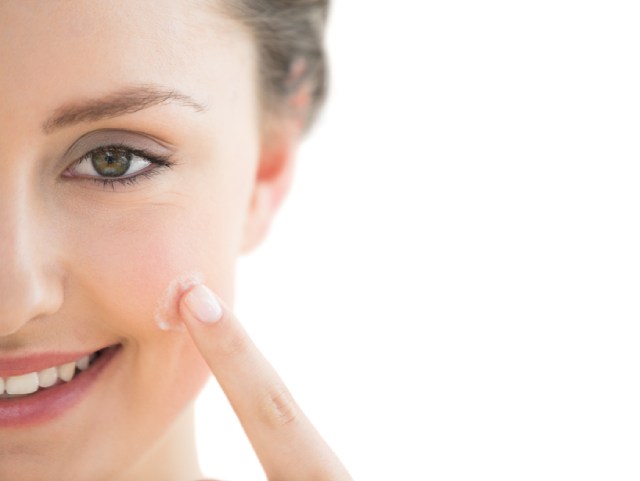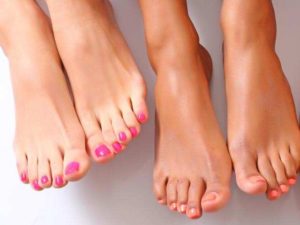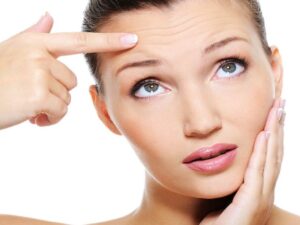A vast majority of women I met in my practice insist that they have very “sensitive skin”. This could mean anything from dry and tight skin, or acne-prone skin, or red flushed and angry looking skin. The worst sufferers are the ones who have skin that stings and burns.
Unfortunately, most sufferers try a variety of brands on a trial-and-error basis, which can worsen the problem and create frustration. How does one define sensitive skin? And how can one manage and care for problematic skin?
‘Sensitive skin’ is a term used by women to describe an exaggerated or unpleasant sensitivity of the skin to commonly used cosmetics and toiletries. This sensitivity can be in the form of pricking, tingling or burning sensation while using skin care products. These symptoms may also occur when the skin is exposed to harsh sunlight or cold winds. Facial skin is always the worst affected. It seems to affect women more than men, especially while they are menstruating, which suggests some kind of hormonal influence. And most women notice that their skin only behaves this way during periods of emotional upheavals, which is why experts believe that a psychogenic factor may also be at play. As there are only symptoms without much physical evidence of a rash or skin disease, it is hard for a dermatologist to ‘define’ or ‘quantify’ skin sensitivity. But we do know that the modern trend of using multiple skin care products on the skin, on a daily basis (facewash, toner, serum, moisturizer, sunscreen, fairness cream, anti-ageing cream, under eye cream, various types of make-up products in several layers), has made skin sensitivity an increasingly common problem. Added to that, many of us are constantly popping our heads into salons and spas on a weekly basis for clean ups, facials, hair removal treatments, “de-tanning” bleaches, aroma oil massages, chemical peels and various other “services” which are constantly insulting and tormenting our skin. The irony is that cosmetic manufacturers have now come up with entire ranges of cosmetics meant for “sensitive skin”, which may or may not live up to their promise, but will definitely keep your credit card warm and toasty! Do remember: ‘sensitive skin’ is inherent, but ‘sensitized skin’ from over-use and abuse is self-acquired.
Your laugh lines tend to be the most susceptible to irritation and redness, followed by the ‘apple’ of your cheeks, and finally, the skin around your mouth. If you suffer from sensitive skin, you should try to simplify your skin care regime. It is important to rule out medical conditions like acne, rosacea and allergic contact dermatitis, with the help of a dermatologist. If you and your dermatologist are unable to identify the offending cosmetic by keen observation or method of elimination, then it is helpful to perform an allergic patch test. Most of the time, you are not intolerant to the said cosmetic per se, but to one or more specific ingredients in it, which can be identified by carrying out a simple patch test. Your doctor will give you a copy of the report, naming the chemical(s) you are allergic to, and this can be used for future reference when you try to select the right skin care brands for yourself.
If your skin stings or burns, then discard all detergent, soap or deodorant based cleansers. Avoid astringents, anti-ageing creams or anti-acne gels. Discontinue use of all make-up, including eye, hair and nail cosmetics. Stay away from the salon for a while. Your dermatologist may prescribe a mild steroid cream for a few days to reduce the inflammation.
Next, make a list of all the cosmetics that you use on your skin, hair and nails, from dawn to dusk. Wherever possible, go through the ‘list of ingredients’ on the label and spot the offending allergen based on the patch test report obtained from your dermatologist. This may not be possible if you are using low grade or herbal products which do not mention ingredients on the label. Throw out creams, cleansers and body washes that are more than 2 years old. Throw out cosmetics which are more than 6 months old. Lip balms, lipsticks and mascaras are to be replaced every 3 months.
Use only lukewarm water and a bland soap-free cleanser like Cetaphil cleansing lotion to wash your face, and pat dry with a face tissue, instead of using towels. If your skin still feels hot and irritated, then spritz some rose water or thermal spring water to soothe your face. Try the Vichy Thermal Spa water, for instance, for some instant relief. Use glycerin or bland petroleum jelly to keep your skin moisturized.
Skin care products must be re-introduced first, and not make-up. Your dermatologist will choose a moisturizer which is free from fragrance, parabens and lanolin. Carry your moisturizer to work and reapply as often as you need, especially if you work in an air-conditioned office for long hours. Sunscreens are a must, and your doctor may prescribe a physical sunscreen instead of a chemical sunscreen. Sebamed and La Roche Posay Anthelios are good examples of chemical sunscreens which are suitable for sensitive skin. Avoid scrubs, toners and face washes that contain beads or granules. Reintroduce cosmetics in the following order- lipstick, face powder and powder blush. Do not use ‘long last’ lipsticks, use light eye shadow colors (white or beige), and use pencil instead of liquid eye liners.
After 3-6 months of avoidance, progressively reintroduce cosmetics one by one with a two weekly interval. Consult a dermatologist to choose the right cosmetics.
There are other kinds of sensitivity as well, which can lead to medical conditions like acne and rosacea.
Acne is mainly driven by hormonal fluctuations in the body. You may either be suffering from a hormonal condition, or your genetic constitution makes your skin react this way to normal monthly hormonal fluxes. External factors like environmental stresses (heat, humidity, pollution), diet and cosmetics only have a limited role in aggravating pimples. Certain oil-based moisturizers and sunscreens can clog up your pores and create blackheads and whiteheads. So can use of coconut oil or waxes and pomades on the scalp. Salon facials, steaming and massaging of the face can also clog your pores. Blackheads and whiteheads can eventually develop into acne, and existing acne can get infected and traumatized during salon treatments. A good moisturizer and daily use of sunscreen are skin essentials, yet many women with acne-prone skin are paranoid to use any skin care as they do not wish to anger their acne. They also tend to over-wash their skin, and when they do not use a moisturizer, their oil glands go into overdrive and produce even more sebum to compensate for the dryness. This creates an evil cycle of over-washing the face with harsher cleansers which strip the skin off its natural oils. Dry and irritated skin is more prone to sunburn and the acne leaves unsightly dark marks as remnants. So how does one care for acne-prone sensitive skin?
Cleansers containing glycolic and salicylic acid will dry up acne, but they are not suitable for sensitive skin. Try cleansers like Avene cleanance gel cleanser which contain anti-inflammatory agents. Use non-comedogenic, water-based moisturizers like Neutrogena oil-free moisturizer. Consult a dermatologist for the medical management of your acne.
Rosacea is a skin ailment where the skin tends to blush (transient redness) or flush (permanent redness) on the cheeks, tip of the nose, and sometimes on the chin. Unlike acne, which affects men and women in their teens and 20s, rosacea usually affects older individuals in their 30s and 40s. This facial redness is usually seen in response to heat, eating hot or spicy foods, caffeine, alcohol, anger, and physical exertion from sex and exercise. It may even be associated with stomach acidity issues caused by certain bacteria. Medications like steroids and hormonal pills can also cause Rosacea. It gets worse around menopause. And it may be associated with profuse sweating on the face (wet blushing). Rosacea is different from the blushing associated with social anxiety disorders, which is temporary and strictly a psychological phenomena.
If left untreated, one may eventually develop acne like bumps and boils on the face. And in severe cases, the facial redness may become a permanent state, with appearance of tiny broken blood vessels on the face, and permanent swelling and enlargement of the tip of the nose. While some sufferers complain of worsening of their symptoms with use of cosmetics and toiletries, for the large part, this is a medical condition which requires medical treatment. Use of a high grade sunscreen which provides broad spectrum coverage against Ultraviolet-A and-B radiation helps, but only as a supplement to medical treatment. Those suffering from permanent flushing can mask their facial redness using green tinted concealers. Triggers like alcohol and spicy food must be avoided as far as possible, or else the Rosacea might return despite treatment.




